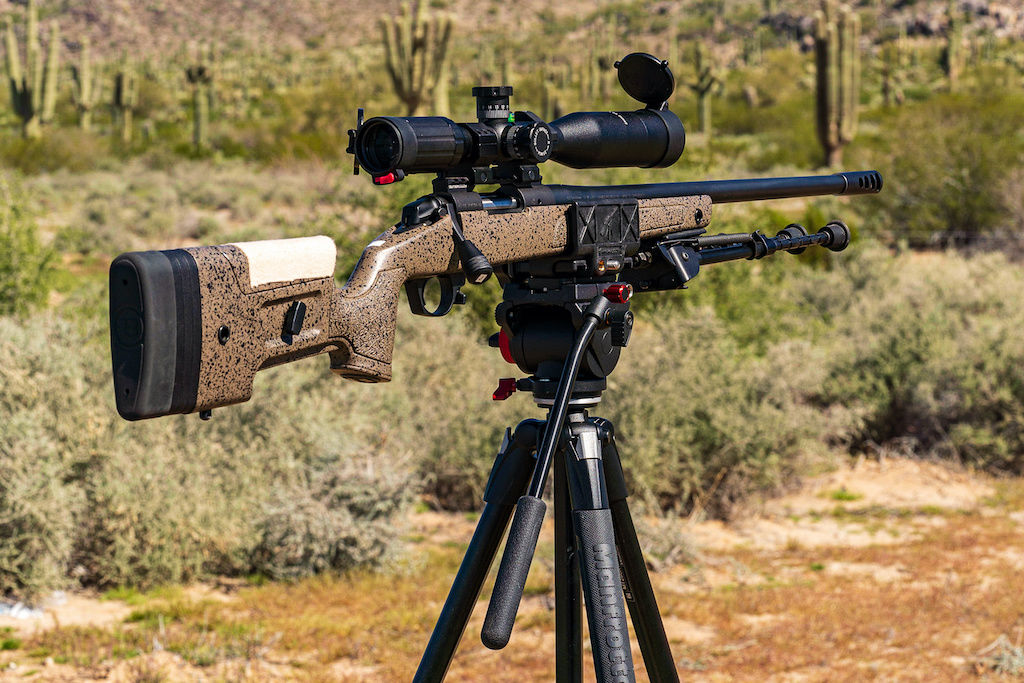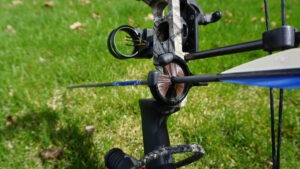Ice fishing is a popular winter activity for anglers all around the world. It requires specific techniques and equipment to have a successful fishing trip. One critical aspect of ice fishing is the knot used to attach the jig to your fishing line. In this article, we will explore the various knots used in ice fishing and help you discover the best knot for your ice fishing jig.
Understanding the Importance of the Right Knot
Choosing the right knot for your ice fishing jig is essential for several reasons. First and foremost, the knot serves as the connection between your fishing line and the jig. A secure and reliable knot ensures that you won’t lose your jig when reeling in a fish. Additionally, the right knot enhances the presentation of your jig, increasing your chances of attracting fish.
When it comes to ice fishing, every detail matters. The type of knot you choose can make a significant difference in your fishing experience. It’s not just about securing your jig; it’s about optimizing your chances of success.
Imagine yourself out on the frozen lake, surrounded by the serene beauty of nature. The crisp air fills your lungs as you prepare to drop your line into the icy depths below. You carefully tie your knot, knowing that it will be the lifeline between you and the fish that lurk beneath the frozen surface.
The Role of Knots in Ice Fishing
Ice fishing knots play a crucial role in ensuring a successful catch. They provide strength and durability, allowing you to handle larger fish without fear of the knot breaking. The last thing you want is to lose a trophy-worthy catch because of a weak knot.
But it’s not just about strength. The right knot can also enhance the movement and action of your jig, making it more enticing to fish. As you jiggle your line, the knot acts as a pivot point, creating a lifelike motion that mimics the natural movements of prey. This added realism can be the difference between a fish taking the bait or swimming away uninterested.
Imagine the excitement as you feel a tug on your line. The fish has taken the bait, and now it’s up to your knot to hold strong. With a well-tied knot, you can confidently reel in your catch, knowing that your knot won’t let you down.
Factors to Consider When Choosing a Knot
When selecting a knot for your ice fishing jig, there are several factors to consider. The strength of the knot is paramount, as you don’t want it to give way when fighting a fish. The last thing you want is to lose a prized catch because of a knot failure.
But strength alone is not enough. Ice fishing often takes place in cold conditions, which can make tying knots challenging. Therefore, it’s crucial to choose a knot that is easy to tie, even with numb fingers. The last thing you want is to struggle with a complicated knot while your hands are freezing.
Furthermore, the knot should provide a secure connection between your line and jig. It should prevent slippage, ensuring that your jig stays in place and maintains its intended action. A loose knot can result in a less effective presentation, reducing your chances of attracting fish.
Consider the various knots available for ice fishing jigs, such as the improved clinch knot, the palomar knot, or the trilene knot. Each knot has its advantages and disadvantages, so it’s essential to experiment and find the one that works best for you.
So, the next time you head out for an ice fishing adventure, take a moment to consider the importance of the right knot. It’s not just a simple connection; it’s a vital link between you and the fish. Choose wisely, and may your knots be strong and your catches plentiful.
A Comprehensive Guide to Ice Fishing Knots
When it comes to ice fishing, having the right knots can make all the difference. Whether you’re a seasoned angler or just starting out, knowing which knots to use can help ensure that your jigs stay secure and your catch stays on the line. In this guide, we will explore three of the best knots for ice fishing jigs and provide step-by-step instructions on how to tie them.
The Palomar Knot
The Palomar knot is renowned for its simplicity and strength. It is easy to tie and provides maximum knot strength, making it a popular choice among ice anglers. This knot is particularly useful when using heavier lines or fishing in areas with strong currents.
To tie the Palomar knot, follow these steps:
- Make a loop with the end of your fishing line.
- Pass the loop through the eye of your jig.
- Tie a simple overhand knot with the loop, but don’t tighten it completely.
- Pass the jig through the loop.
- Tighten the knot by pulling both ends of the line.
By following these simple steps, you can quickly and securely attach your jig to your line, giving you the confidence to fish with ease.
The Improved Clinch Knot
The Improved Clinch knot is another popular choice for ice fishing jigs. It is easy to tie and provides a reliable connection. This knot is particularly useful when using lighter lines or fishing in areas with finicky fish.
To tie the Improved Clinch knot, follow these steps:
- Thread the end of your fishing line through the eye of the jig.
- Wrap the line around itself, making five to seven turns.
- Pass the end of the line through the small loop formed just above the eye of the jig.
- Moisten the knot and tighten it by pulling both ends of the line.
With the Improved Clinch knot, you can have peace of mind knowing that your jig is securely attached and ready to entice even the most cautious of fish.
The Uni Knot
The Uni knot is a versatile knot that works well for ice fishing jigs. It provides strength and is relatively easy to tie. This knot is particularly useful when using braided lines or fishing in areas with heavy vegetation.
To tie the Uni knot, follow these steps:
- Pass the end of your fishing line through the eye of the jig, creating a loop.
- Wrap the end of the line around the main line and through the loop four to six times.
- Moisten the knot and tighten it by pulling both ends of the line.
With the Uni knot, you can have confidence in your line’s ability to withstand the toughest of fights, ensuring that your prized catch doesn’t slip away.
Now that you have a comprehensive understanding of these three essential ice fishing knots, you can confidently head out onto the frozen lakes and rivers, knowing that your jigs are securely attached. Remember, practice makes perfect, so take the time to master these knots before your next ice fishing adventure. Happy fishing!
Step-by-Step Instructions to Tie the Best Knots
Now that we’ve explored the three best knots for ice fishing jigs, let’s delve into step-by-step instructions for tying them.
Tying the Palomar Knot
The Palomar knot is straightforward to tie. Follow these steps:
- Create a loop at the end of your fishing line.
- Pass the loop through the eye of your jig.
- Tie a simple overhand knot with the loop.
- Pass the jig through the loop.
- Tighten the knot by pulling both ends of the line.
Tying the Improved Clinch Knot
The Improved Clinch knot is a reliable knot choice. Follow these steps:
- Thread the end of your fishing line through the eye of the jig.
- Wrap the line around itself, making multiple turns.
- Pass the end of the line through the small loop formed above the eye of the jig.
- Moisten the knot and tighten it by pulling both ends of the line.
Tying the Uni Knot
The Uni knot is versatile and easy to tie. Follow these steps:
- Pass the end of your fishing line through the eye of the jig.
- Create a loop by bringing the end of the line back towards the jig.
- Wrap the end of the line around the main line and through the loop formed.
- Moisten the knot and tighten it by pulling both ends of the line.
Tips and Tricks for Perfecting Your Knot-Tying Skills
Mastering the art of tying knots for ice fishing jigs takes practice. Here are some tips and tricks to help you perfect your knot-tying skills:
Common Mistakes to Avoid
When tying knots for ice fishing jigs, avoid these common mistakes:
- Not wetting the knot before tightening it, which can weaken the knot.
- Over-tightening the knot, which can cause it to break.
- Using worn-out fishing line, which reduces knot strength.
Maintaining Your Knots in Cold Conditions
Cold conditions can make knot-tying challenging. To ensure your knots stay secure, consider these tips:
- Keep your fishing line and fingers as dry as possible to prevent freezing.
- Use line with a higher knot strength rating for added security.
- Carry a small container of lip balm or petroleum jelly to lubricate the knots.
The Impact of Knot Choice on Your Ice Fishing Success
The knot you choose for your ice fishing jig can have a significant impact on your success. Here are two important factors to consider:
How Knot Strength Affects Jig Performance
A weak knot can result in lost jigs and missed opportunities. By using a strong and reliable knot, you ensure that your jig performs optimally, attracting more fish and increasing your chances of a successful catch.
The Connection Between Knot Type and Fish Species
Different fish species have different behaviors and feeding patterns. Certain knots may be more effective at enticing specific species. It is essential to research the target fish species and select a knot that suits their preferences to maximize your ice fishing success.
In conclusion, selecting the right knot for your ice fishing jig is crucial for a successful fishing trip. Consider factors such as knot strength, ease of tying, and connection security when making your choice. Experiment with different knots and techniques to find the one that works best for you. With the proper knot, you’ll increase your chances of landing a trophy fish during your next ice fishing adventure.


